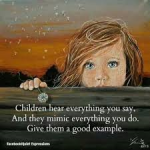Happy New Year to one and all!
Here’s hoping your holiday was safe and restful, and that you are all recharged by a couple weeks of relaxation and family time. For me and my family, we are most grateful for the time to be together, enjoying each other’s company and feeling the relief of having no homework, deadlines, or pressure to get things done. Just a peaceful, quiet time to let the silence of tranquility enter our lives.
At these times, I am also very aware that our students and families experience the holidays in many different ways. For some there has been much festivity and joy, and for others it has been less than pleasant.
Which has led me to reflect on a conversation we had as a staff just before the break, something I have been thinking about a lot and pondering for our school and community. And that is, that educators all across our system are noticing more and more children with anxiety, whether it be a generalized form, or specific anxieties about events, situations or future events.
We do a number of things at school to help with this, including MindUp and the Zones of Regulation program. In addition, we offer mindfulness activities during class, Art Therapy and counseling, and other “non-academic” programs and activities to deal with these challenges the students are presenting.
As a parent, caregiver or concerned neighbor, you may be asking yourself what you can do to help a child who’s feeling anxious? Here are some of my thoughts, and a few strategies to support children with anxiety, borrowed from Carmen Carter, Registered Clinical Counsellor in Nelson, B.C.
- Help the child focus on their breath, slowly in through their nose and out the mouth. Many traditions around the world use this as a technique to focus, which then helps you become present and focus less on those things which may cause anxiety.
- Help a child develop regular routines, including baths, stories, mealtimes, and relaxation before bedtime. Particularly for a young child, a routine is a comforting pattern they can count on which provides stability and regularity in what can seem a chaotic world. How many of us can remember the weekly meal at grandma’s house, and how that provided the anchor in your week which made all the difference.
- Help the child change their thinking from negative to positive. Sometimes this is as simple as helping them see the glass as half full, or recognizing there may be something positive in a situation that they are seeing as only negative. When we “beat the drum” of what is, it prevents us from seeing what might be. As Richard Bach said in Johnathon Livingston Seagull, “inside every problem is a gift”.
- Get your child active. Do something fun, get outside, play a game, fresh air and exercise do a world of good for a body and mind. How often when we’re in a funk do we get outside and exercise, only to come in and realize we’re in a far better mindset than before we went out? This is a gift you can give a child.
- Acknowledge your child’s feelings. This goes for the boys too. Unfortunately in our culture there are a lot of messages which portray feelings and emotions as a sign of weakness. Kids are taught to “be tough”, “suck it up”, “don’t be such a baby” and the like. A caring adult can help a child work through their challenges; “I can see you are worried about that-would you like to talk about it?” usually supports the child to talk about their feelings, and is the first step in them moving on.
- Be a healthy role model for children by taking care of yourself, and acknowledging your own emotions when you are feeling anxious or fearful. They will watch how your handle your own stressors, and that becomes their inner voice when it’s their turn to do the same.
Hopefully there are a few things in here you have found useful. All the best for a healthy and happy New Year
Mr. Ron Sherman, Principal

